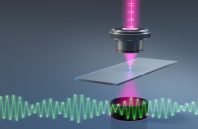The past decade has seen significant progress in the development of novel mid-infrared (mid-IR) coherent light sources spanning a broad spectral bandwidth, and of new spectrometric techniques to make the most of them. Researchers now harness such light sources—based on mode-locked lasers and nonlinear frequency conversion, on frequency comb generators, on supercontinua and on chip-scale devices such as microresonators—in schemes such as dual-comb spectroscopy, Michelson-based Fourier transform spectroscopy or high-resolution crossed-dispersion spectrometry.
Spectroscopy with these devices is still at an early stage. Yet these techniques hold out the promise of improved molecular sensing for environmental science, analytical chemistry and biomedicine. Here, drawing mostly on selected examples from our own research, we illustrate the field’s progress, and we discuss new opportunities and future prospects, especially for on-chip spectrometers that could herald a generation of compact, flexible and rapid sensing devices.

 (585) 768-2513
(585) 768-2513

